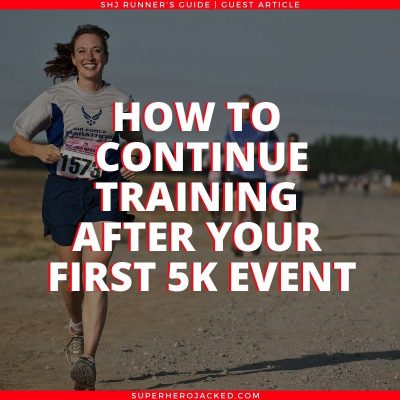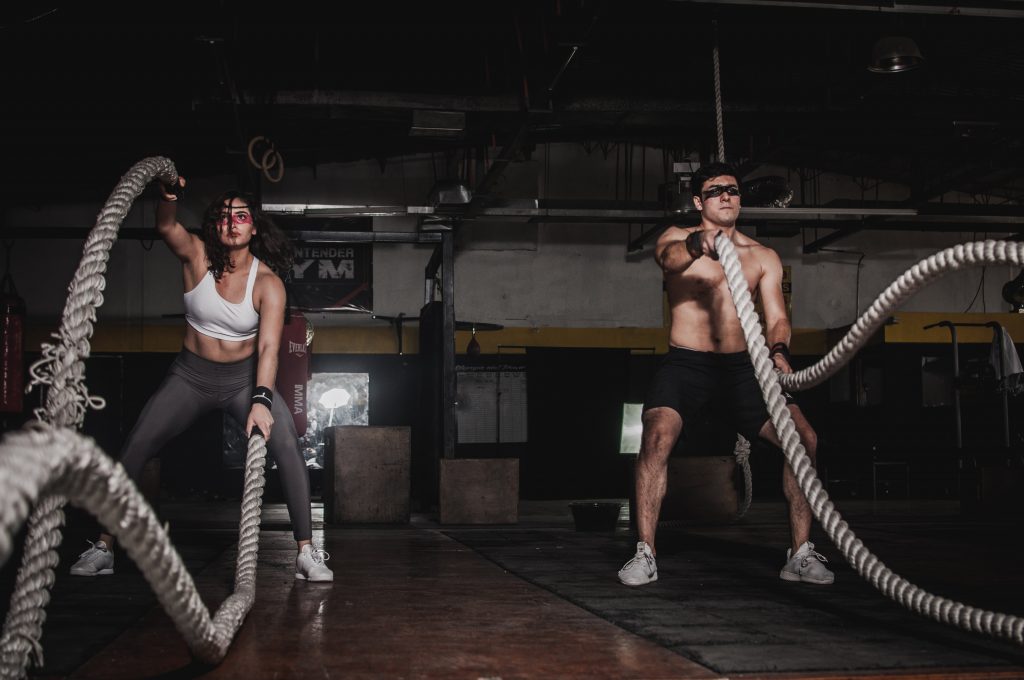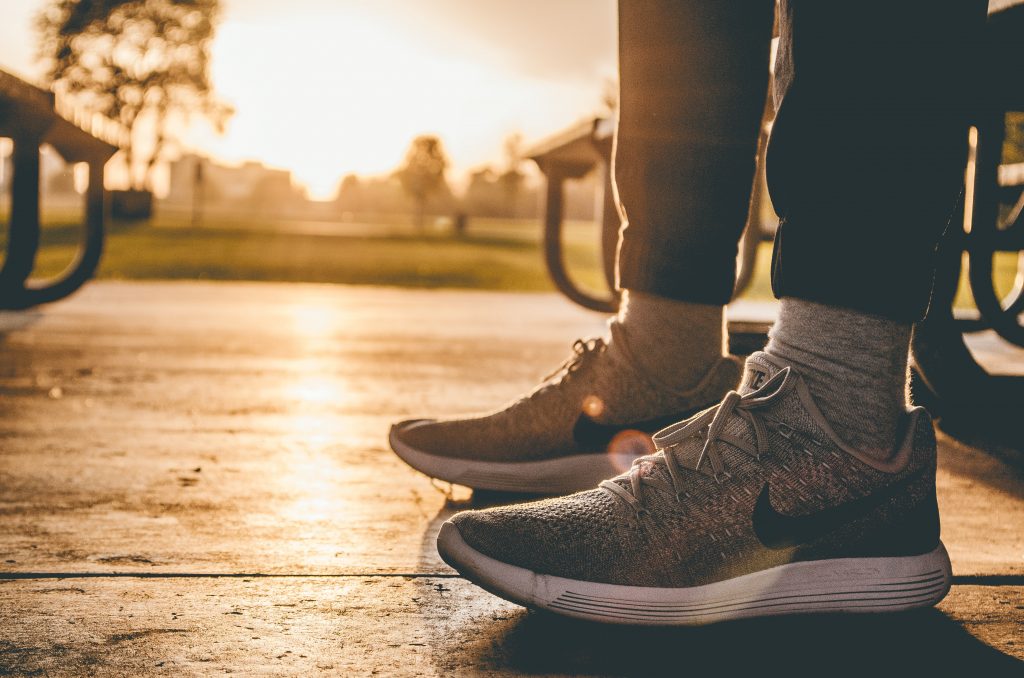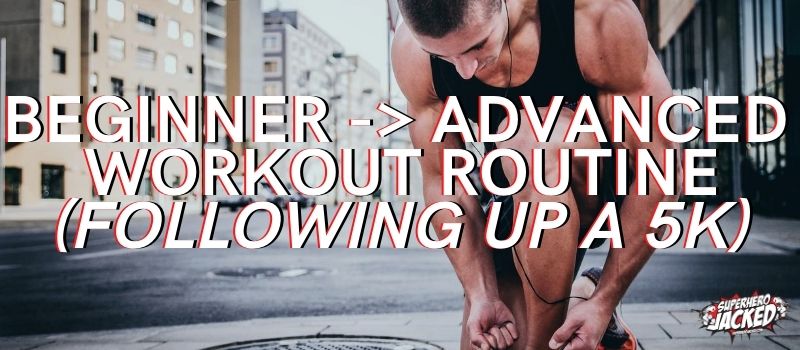
**This is a Guest Post from Megan from Find My Footwear. Learn more about her at the bottom of this article!**
Going from the couch to running a 5k is a significant achievement, and you should be proud of that. It’s a fantastic foundation for the rest of your fitness and wellness journey.
The key is to try and turn this start into a meaningful and long-lasting lifestyle change. Future you will thank you for this in the long run, that’s for sure.
So, you’ve nailed a 5k.
Now what?
Pick Your Next Goal
Keep moving forward. You don’t have to increase your distance or go for bigger or bolder challenges. Although, finding something else to aim for once you’ve achieved your 5k run is a vital part of staying fired up and motivated.
Take some time to decide what you want from your fitness journey, as well as what kind of spare time you have for training.
There’s nothing wrong with aiming for a marathon, another 5k race – or anything in between. You may want to consider breaking your goal up into more manageable parts. This will help with goal setting and motivation down the road. Just be aware of the time and effort involved in training and be sure that your lifestyle can accommodate it.
Join A Running Club
There’s nothing like having another person to keep you accountable to your goals and training. Having the support and camaraderie of a running club is a wonderful way to stay in shape.
You’ll find yourself surrounded by so many like-minded people who are all at different points in their running journey. There’s also a sense of healthy competition in these clubs, and this can be a driving factor in getting you to give your best.
For a beginner, being able to turn to fellow clubmates who are more experienced is an invaluable resource. They can help you with training plans, advice on shoes and other gear, races you should aim for, and ideas for running routes. Plus, it’s a great way to make new friends and get more social interaction.

Shake Things Up With Cross-Training
With its constant and repetitive motion, running can be somewhat hard on the body.
Breaking up your training with other exercises will give your muscles and joints a little relief from the high impact load. Swimming, cycling, Pilates, yoga, and weight training will all help to strengthen your body in other ways.
Focusing on your core strength and flexibility will improve your running too. It will help to align your legs better and go a long way towards ensuring you’re using the correct muscles when you stride.
Some great exercises for building core strength are:
- Bridges
- Crunches
- Planks – traditional, side and forearm
- Sit-ups – traditional and butterfly
Cross-training is a great way to prevent boredom and fatigue in your exercise routine. If you’re doing something else at least twice a week, you can challenge yourself in different ways and keep your body guessing. This is good for the mind too because you have to concentrate when doing different exercises, and you don’t fall into a pattern of mindlessly performing a routine.
Switch it up, and you’ll see the results.
Keep An Eye On Your Shoes
A large percentile of running-related injuries can come from worn-out shoes. Unfortunately, even the best quality cushioned running shoes have a lifespan of a specific number of kilometers.
Your shoes’ lifespan will depend on what it was designed for, how you run, the impact of your stride, and the shoe’s build. Once you reach the end of that lifespan, you’ll need to replace your footwear fast.
If you aren’t sure about your shoes and if they are wearing out, there are a few signs that you can look for. Start by examining the soles and seeing if they are worn significantly on the heels or toes. If the tread has worn away, they are not protecting your feet as much as they were when they were new.
The side of the sole is another place to examine. With use, the cushioning in the soles will start to compress. This creates creases in the soles’ sides because the cushioning isn’t popping back up to where it was when the shoe was new. The deeper the creases, the less support you’re getting.
You can often tell if your shoes need replacing because of how your body feels during and after a run. Sore knees, hips, or back are the leading indicators. They’ll likely just start as little niggles as the support decreases. Pay attention to these niggles as they indicate that it’s time to invest in new footwear.

Match Your Diet To Your Exercise Levels
The right nutrition when exercising is critical. The more you increase your exercise levels, the more important this becomes. If you have gone from a sedentary lifestyle to running 5k, and are now moving beyond that, you’ll need to look at adapting your diet to match the amount of exercise you’re doing.
This could be in the form of adding a sports drink to your pre- and post-workout time, or perhaps a protein shake to help your muscles recover and build. If your cardio workouts are increasing and you’re running longer and more regularly, you may need to boost your carbohydrate intake.
If you’re unsure, always consult a dietitian or health expert to ensure your diet is suitable for your body and exercise levels.
Completing a 5k can be just the start of your running journey. With the right training routine, nutrition, and workout schedule, you could be lapping your personal best in only a few months.
Think you’re ready to run?
The Beginner – Advanced Running Workout & Schedule
(For People Following Up a 5K-10K Run)

Training Volume:
4-5 days per week
Explanation:
This is a 4-5 day weekly workout plan for runners who’ve finished their first 5k and want to build stamina, boost their personal best, or tackle longer marathons. We’ve incorporated running and cross-training exercises to improve your speed and stamina and build core strength and flexibility.
While the running/walking distances are clearly defined, the strength and cross-training exercises can be adapted to suit runners of varying strengths or target specific muscle groups. Free weights and machines can be used, and the cross-training exercises switched up, so there’s plenty of flexibility in this schedule.
Monday: Mandatory Rest Day
Tuesday: Run 1k, Walk 500m, repeat x3
Wednesday: Optional Rest day OR strength training:
Planks
5×30 seconds
Bridges
5×15 seconds
Crunches
3×20
KettleBell Squats (2kg or more):
3×10
Lunges
2×10
Burpees
4×5
Pushups
2×5
OR:
15 minutes on a rowing machine
15 minutes on an elliptical strider
15 minutes (3×5 reps with 5-minute breaks) with free weights or kettlebells
Thursday: Run 1k, Sprint 100m, repeat x4
Friday: Mandatory Rest Day
Saturday: Run 2k, walk 250m, repeat x2
Sunday: Cross-training
Options:
- 1-hour Yoga or Pilates
- 30 minute – 1-hour cycle
- 30 minute- 1-hour swim
- Spinning class
10 minute warm-up for running days:
Calf and hamstring stretches
Walking lunches
Jumping Jacks
10 minute cool down
5-minute walk
Total body stretches
Beginners – Advanced Schedule Changes
If you’ve just nailed your first 5k, we suggest starting with the 4-day plan. This will give your body adequate rest periods in between while you work on building stamina.
More experienced runners or those who’ve been working out for more than three months can go for the full five days. Distances and times can also be extended, or extra reps added to the exercises.
There’s no time to get bored with this workout schedule. You’ll be moving forward in different ways all the time!
—–
Get Going. Now.
Megan
Find My Footwear’s Jesse Quick
—–
More About Megan: Megan started her writing career specializing in educational copy. She spends her days writing and studying topics ranging from personal training to mobility and everything in between. Her vice in life, third-wave coffee – black.

SUPERHUMAN SECRETS V.2
NOW UPDATED AND EXPANDED WITH A NEW SECTION & SEVEN BONUSES
USD$29 USD$14.95

